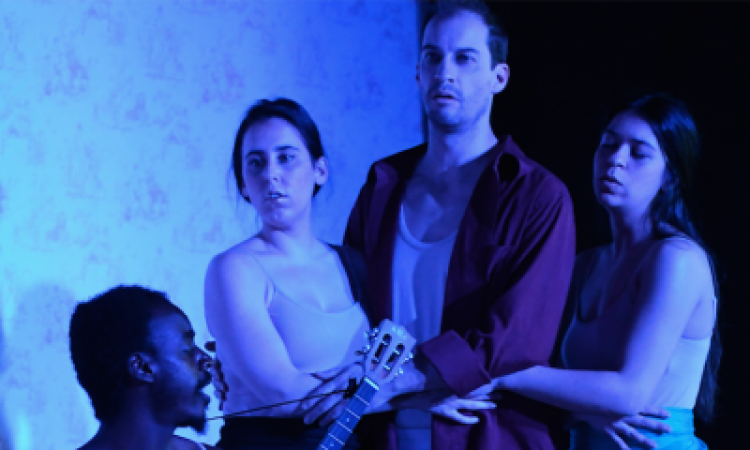In a quest to reach new audiences for performing arts in Philadelphia, Theatre Philadelphia and thINKingDANCE are joining forces and exploring how dance writing and discourse can provide new perspectives on theater. Beginning May 2018, tD writers have been lending their varied backgrounds, interests, and approaches to criticism to professional works of theater in Philadelphia. Let us know what you think in the comments!
Three sisters. A brother. A sister-in-law. All under one roof infiltrated by former peasants, trying to cope with the fact that their world has been forever altered by the red uprising. They delve into petty squabbles, fear for their safety, and mourn the loss of their fallen bourgeois lifestyle. The year is 1917 in post-revolution Russia. Wait, no. The year is 1997 in post-apartheid South Africa. Or, wait, what year is it again?
EgoPo Theater is producing Three Sisters Two as part of their Theater of South Africa season. Reza de Wet wrote the play as a sequel to Chekhov’s Three Sisters. Chekhov wrote his play in the 19th century during the transition between serfdom and industrialization in Russia. De Wet’s work made its debut in 1997, just three years after Nelson Mandela came into power. And here I am, watching in the American political landscape of 2019.
What does it mean to stand in the aftermath of a paradigm shift? To the characters in Three Sisters Two, the moment represents not only the downfall of their own personal lives—youth? lost; time? wasted—but also the “end of the world” at large. As it is skillfully worded in the program, we know that what the family experiences in this play is simply “the end of a world,” a certain kind of privilege watching itself dissolve.
In one of the early scenes, the brother Andrey walks in frustratedly hitting his pocket watch, mumbling about how “time has stopped.” This dark humor carries me through the play and keeps its tone from being too Gone With the Wind-esque. While the work contains plenty of melodrama and moving performances, each family member’s cycling obsessions remain humorous tropes. The sister-in-law Natasha constantly nags and worries about the image of the house, her husband Andrey recites bitter monologues about how he “could have been a professor in Moscow,” the shy sister Irena constantly offers tired siblings glasses of water and pines after a retired military general from the red army. Clinging desperately to their habits and old mantras, each character displays their own coping mechanisms; the repetition adds to the overall commentary. In what ways must we escape the present? Must we yearn for a time when things were “great?” Notably, the eldest sister Olga’s latest health issue is that she has become nearsighted to the point of being almost blind—so uncertain is the future.
Aside from the magnificent acting and humorous whirlwinds of high-stakes family drama, what I am intrigued by most is the set: while the main stage and offstage right are populated by period furniture and soft light, offstage left is a distinctly futuresque limbo-space. Neon tube lights zig zag across the walls, folding chairs are staggered for actors to sit in when they are offstage, and mysterious mics amplify the performers’ whispers as they float into the soundscape. At various times throughout the play, characters float off into this world which is neither past nor present.
The evening ends with the old nana, neglected in her degenerating mental state throughout the play, rising forth and asking, “Why is it so quiet?” Her family has fled back to Moscow and a potential caretaker has left. She is abandoned in the house, alone. Firmly rooted in the past, she rises and barks, “Trying not to take a bath, you naughty children…” and stumbles forward. A picture of delusion, divorced from the future the world catapults towards.
Three Sisters Two, EgoPo Classic Theater, Latvian Society, January 30-February 17.
To join the conversation, follow thINKingDANCE and Theatre Philadelphia online and on social media to read, share, and comment.






